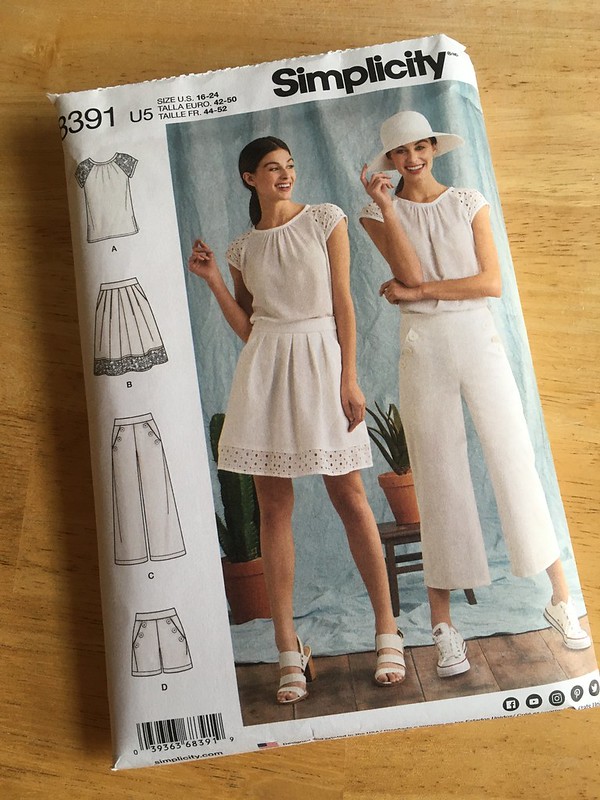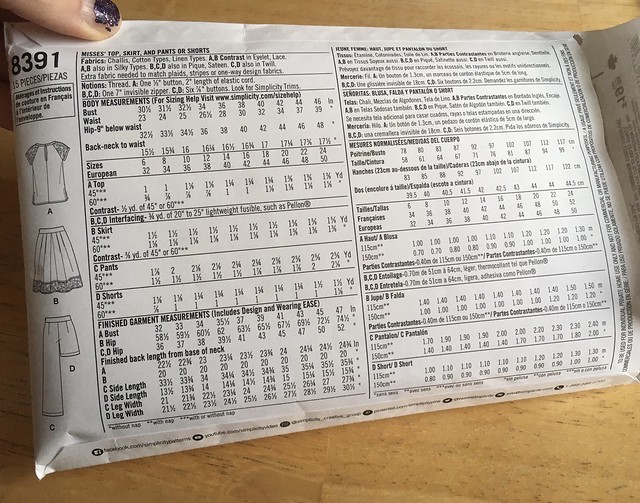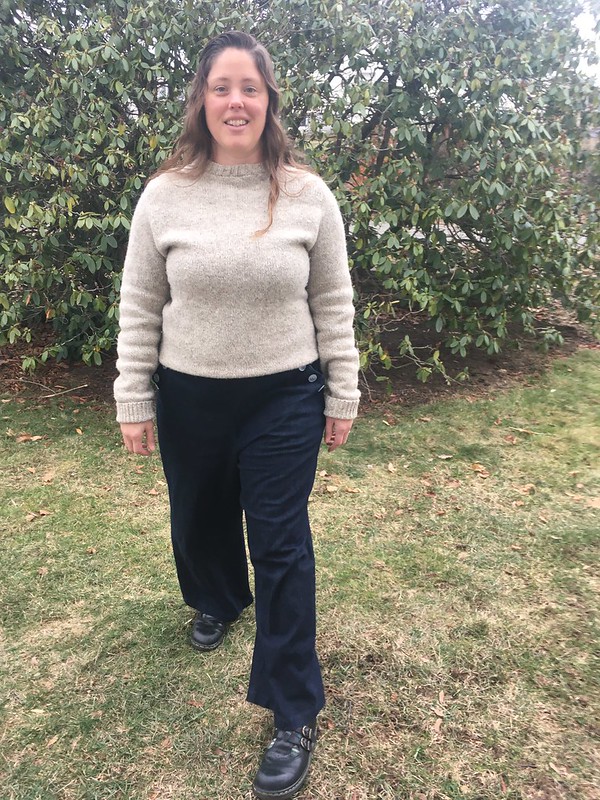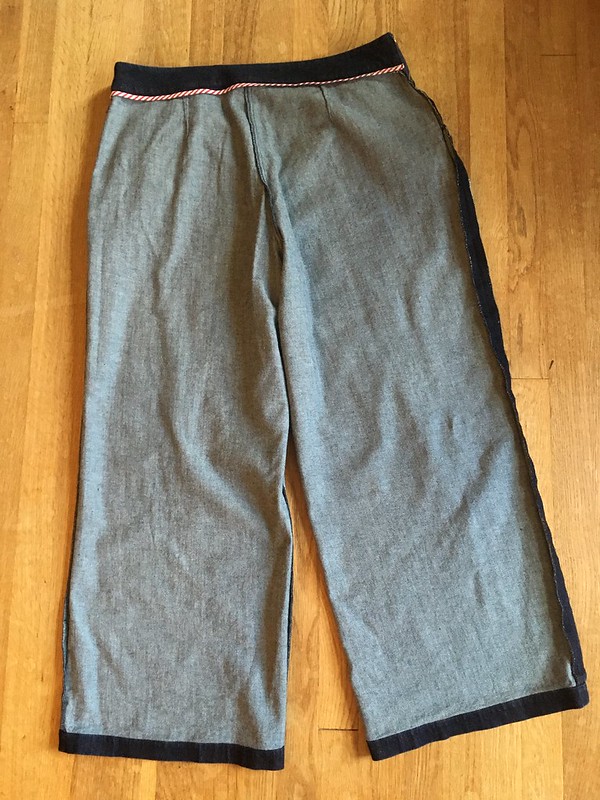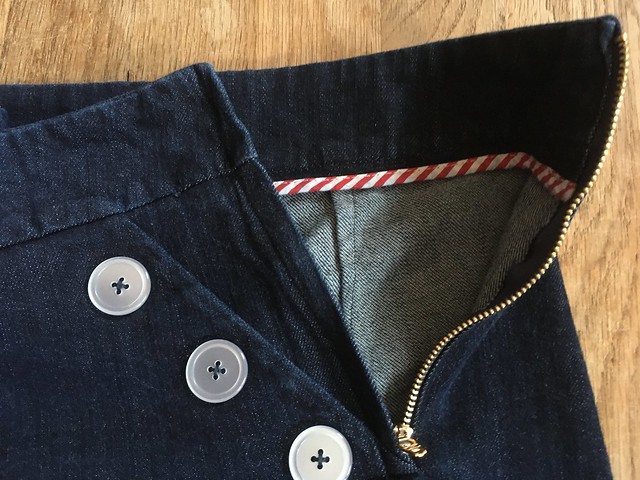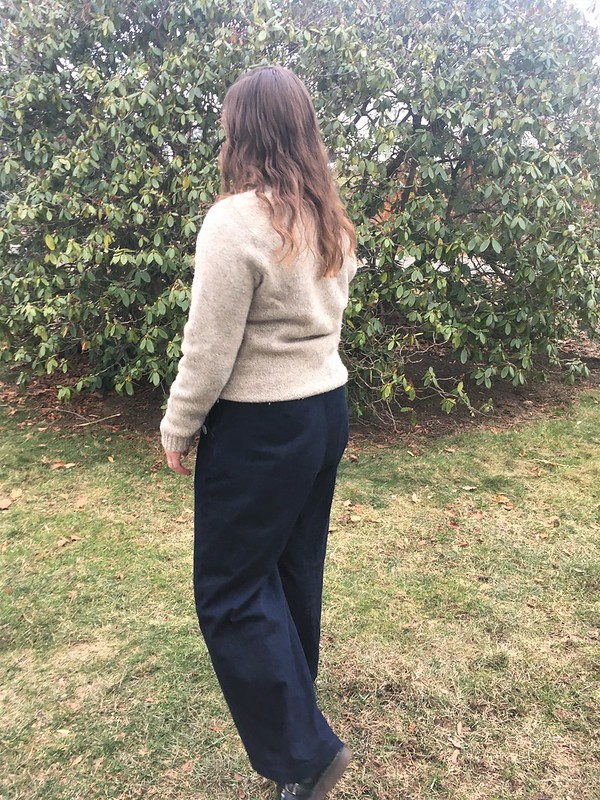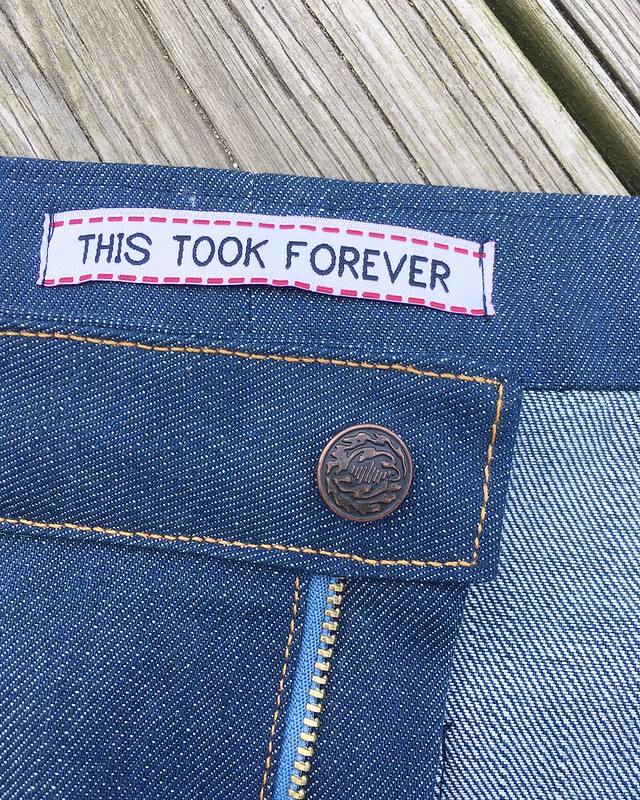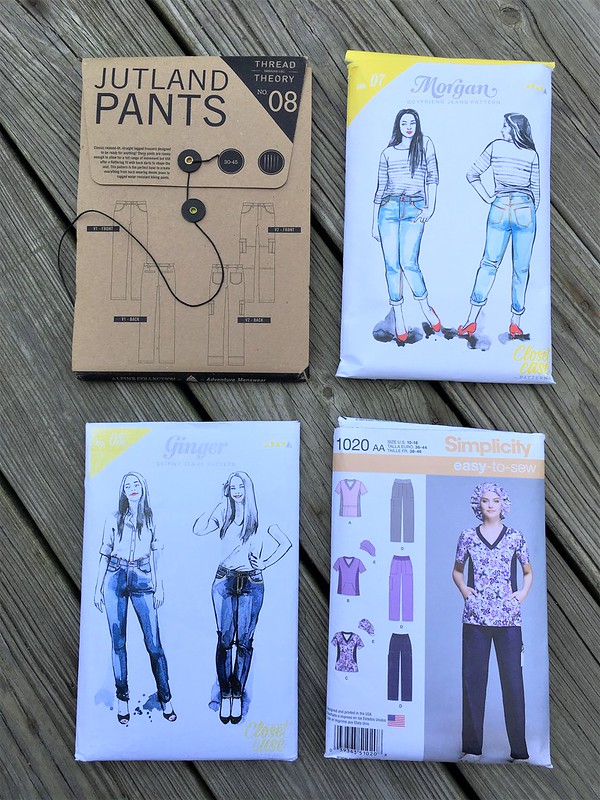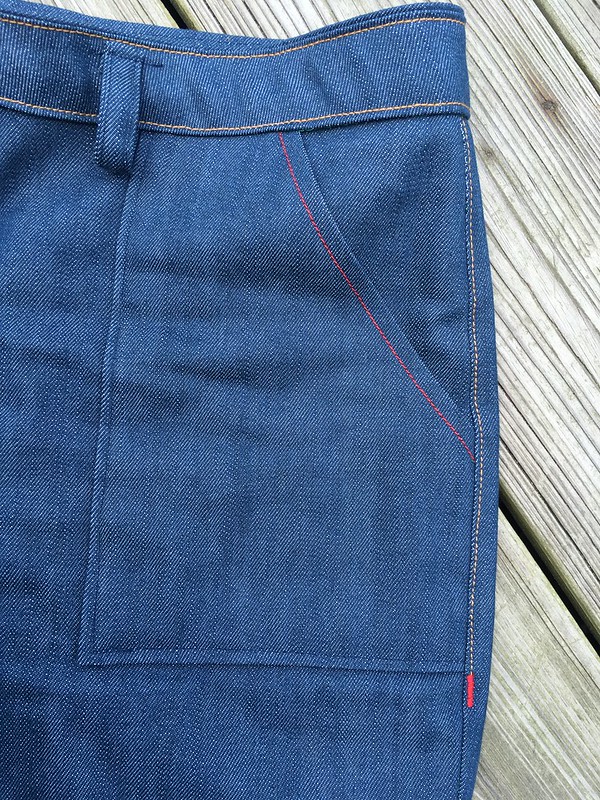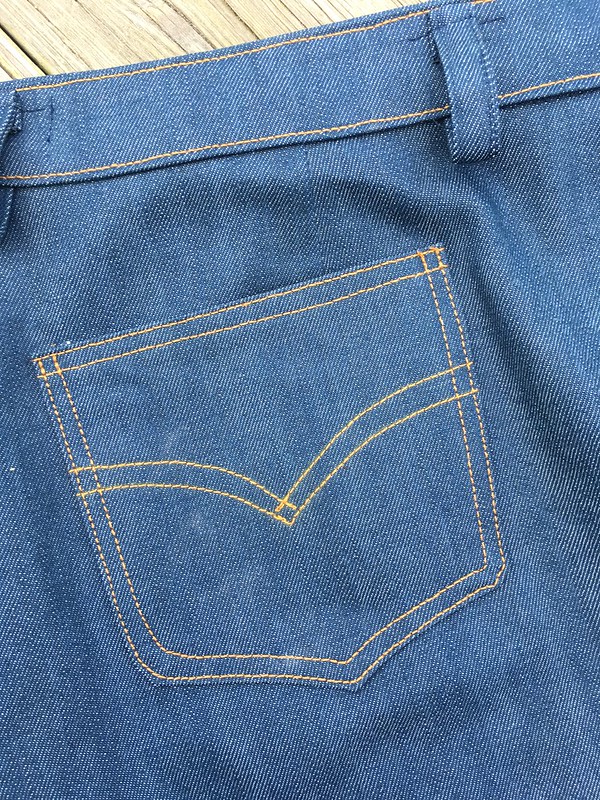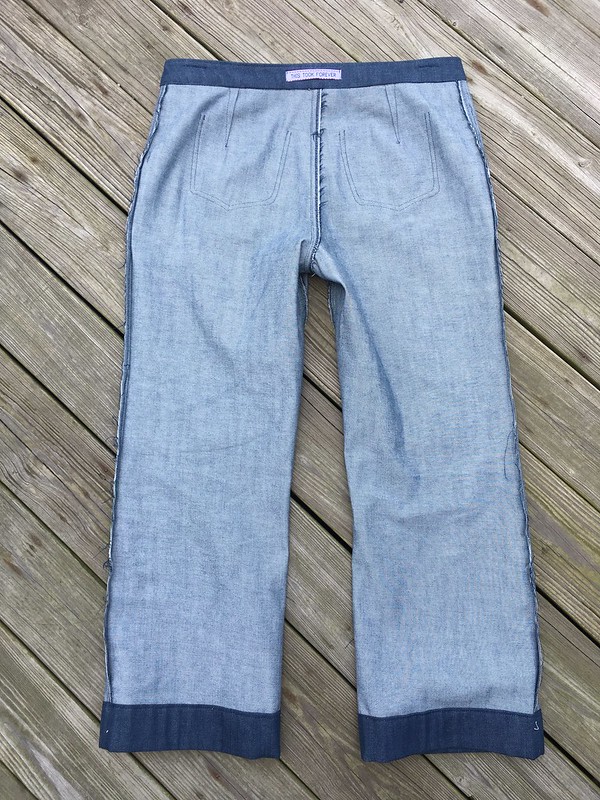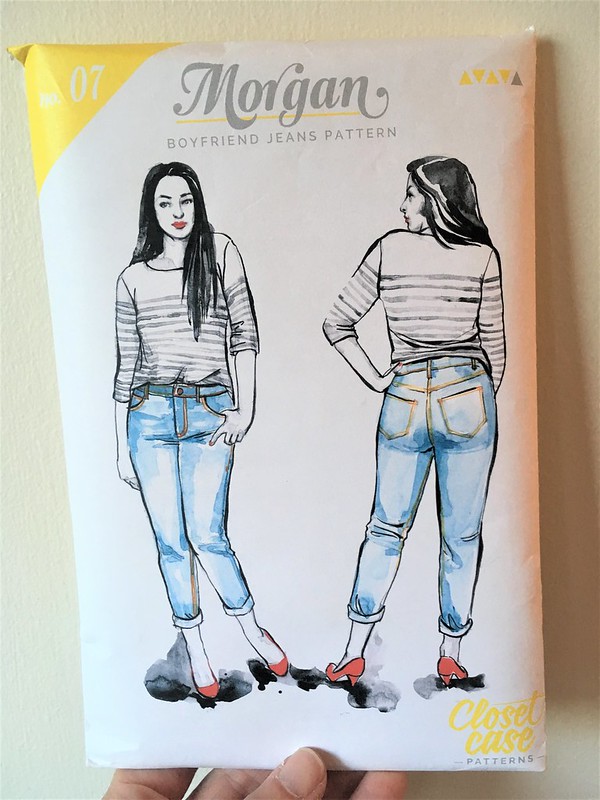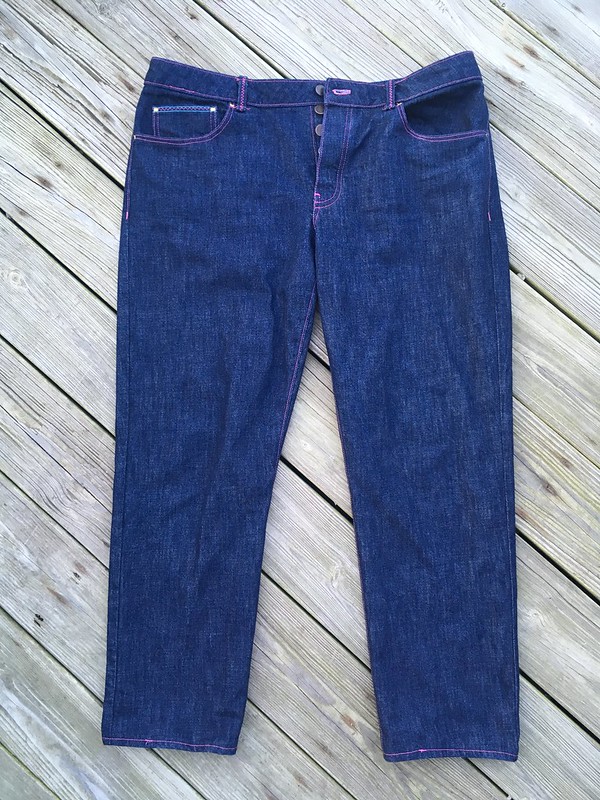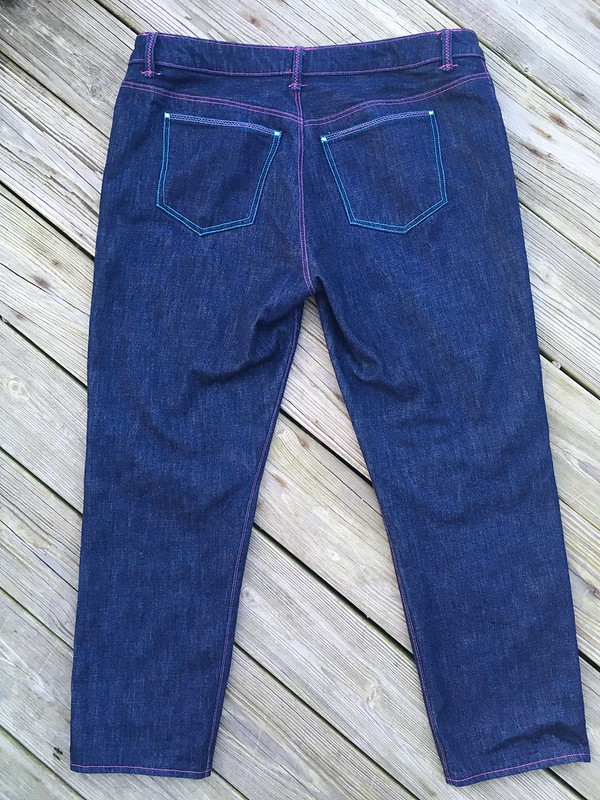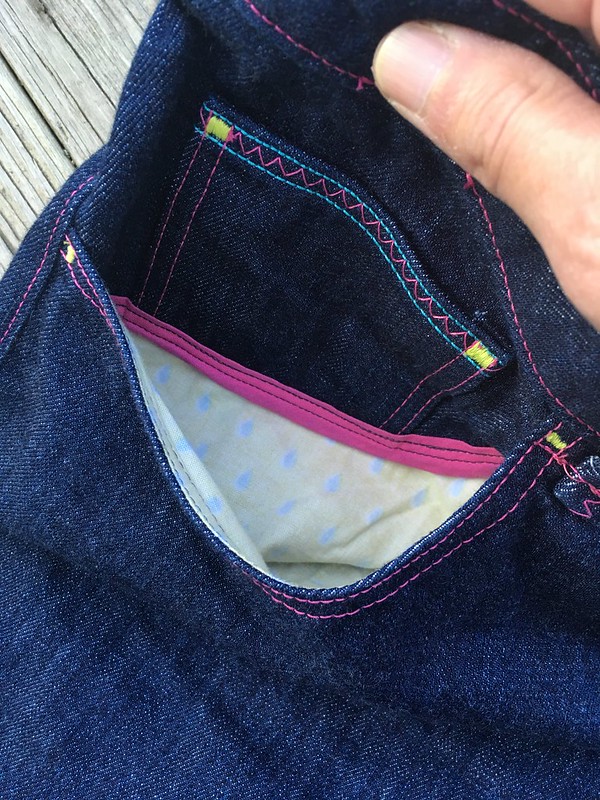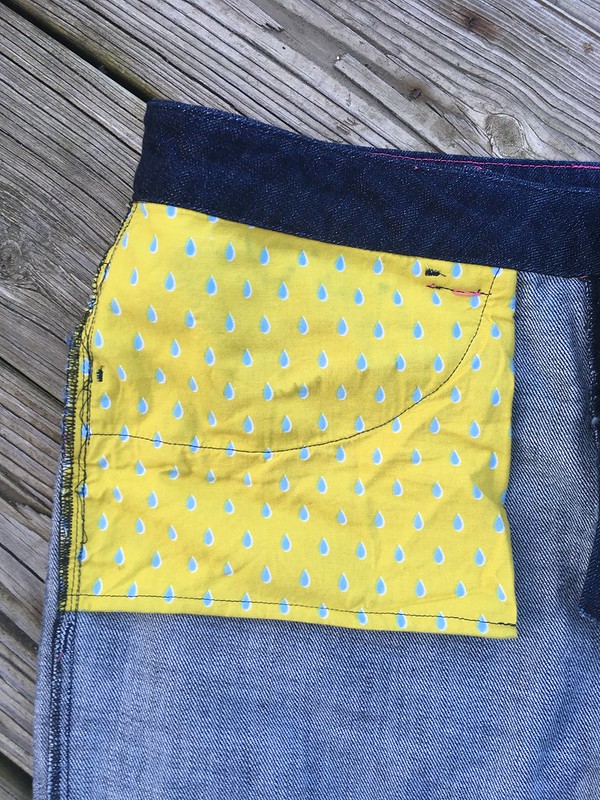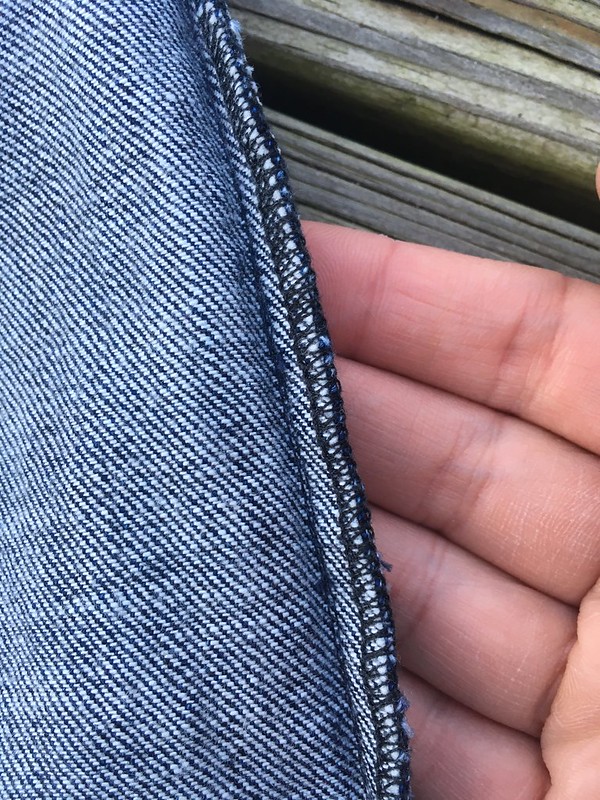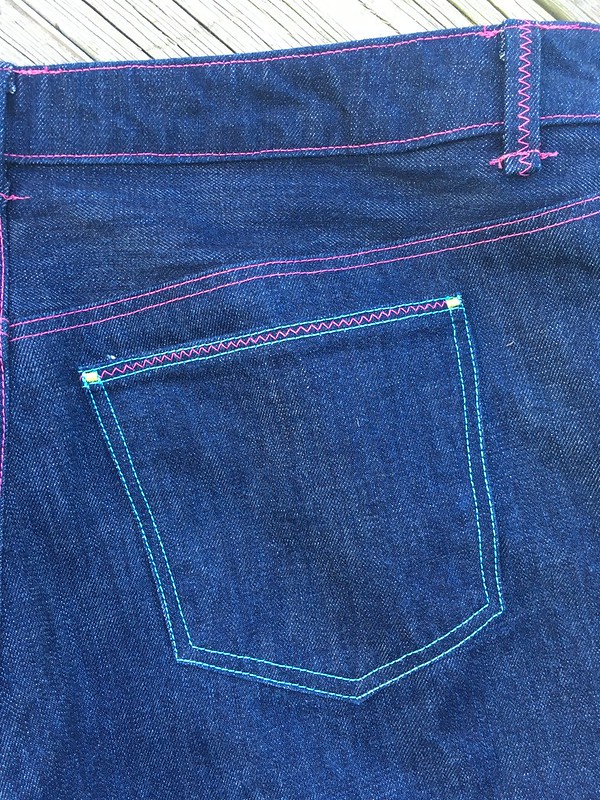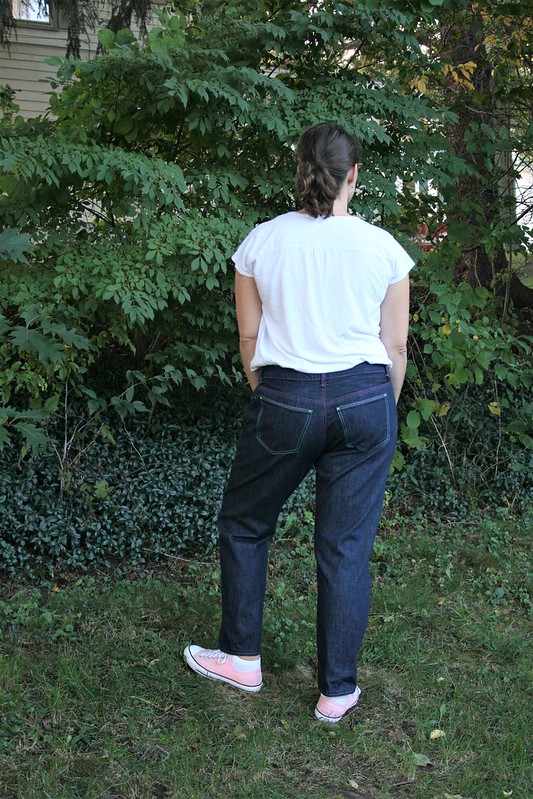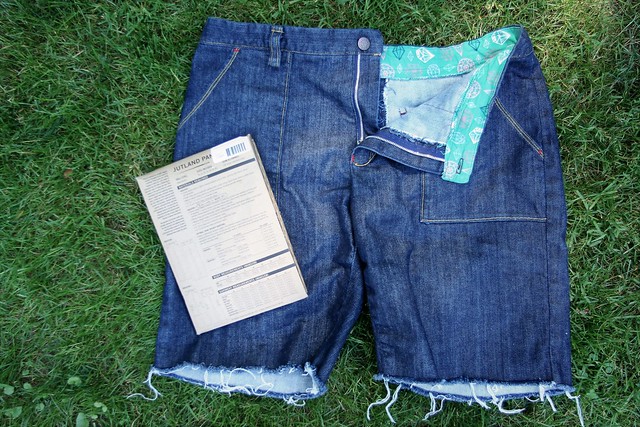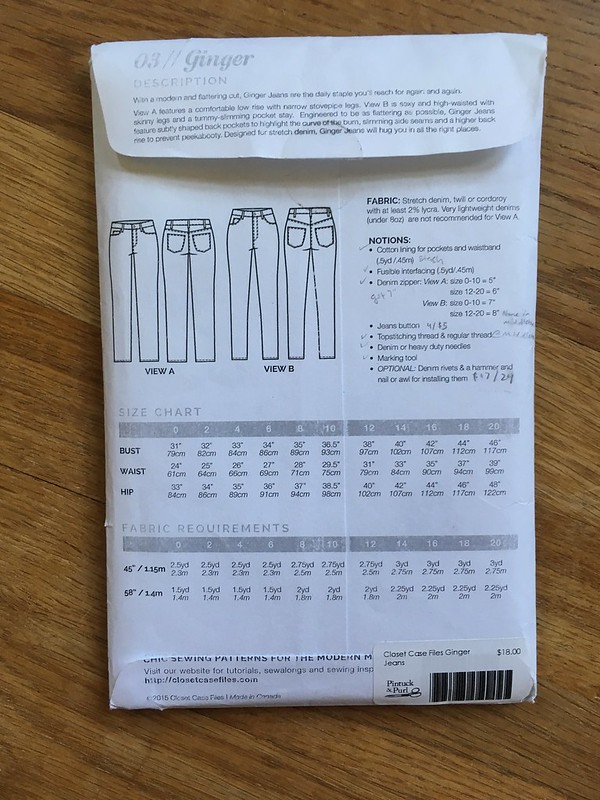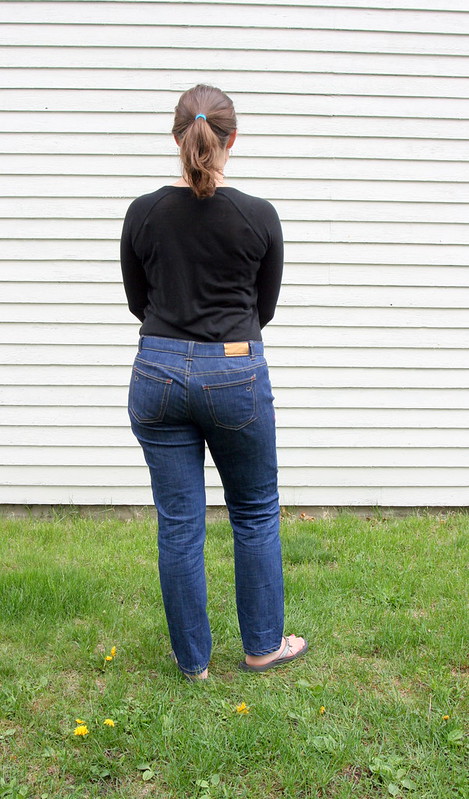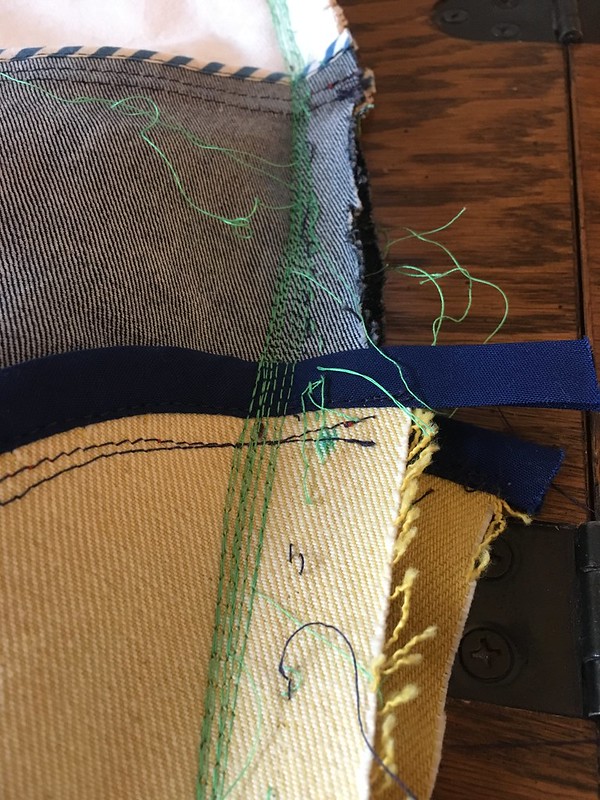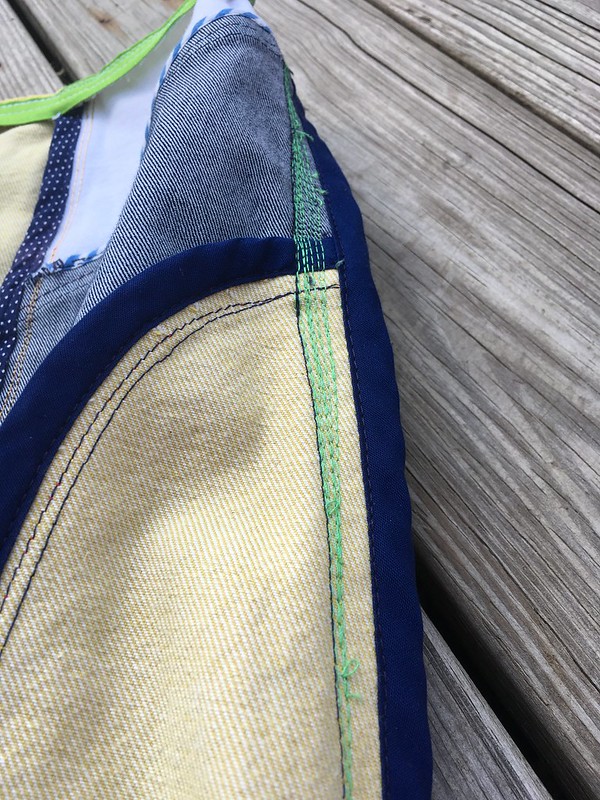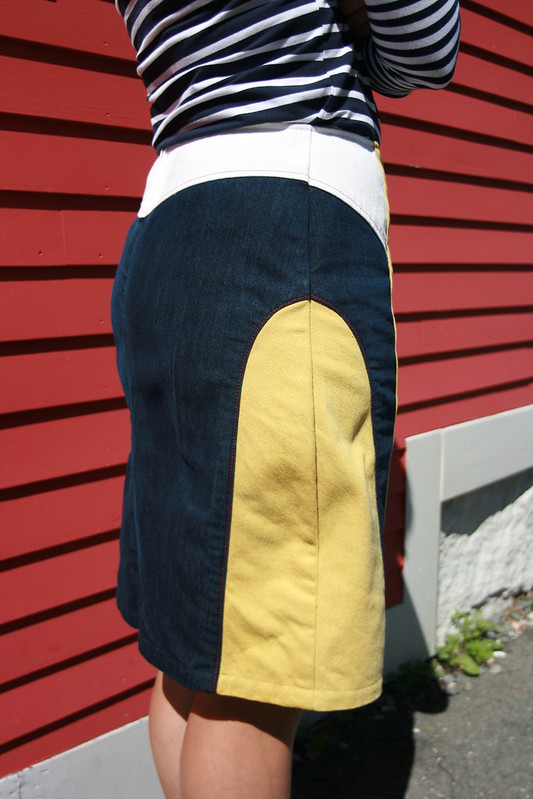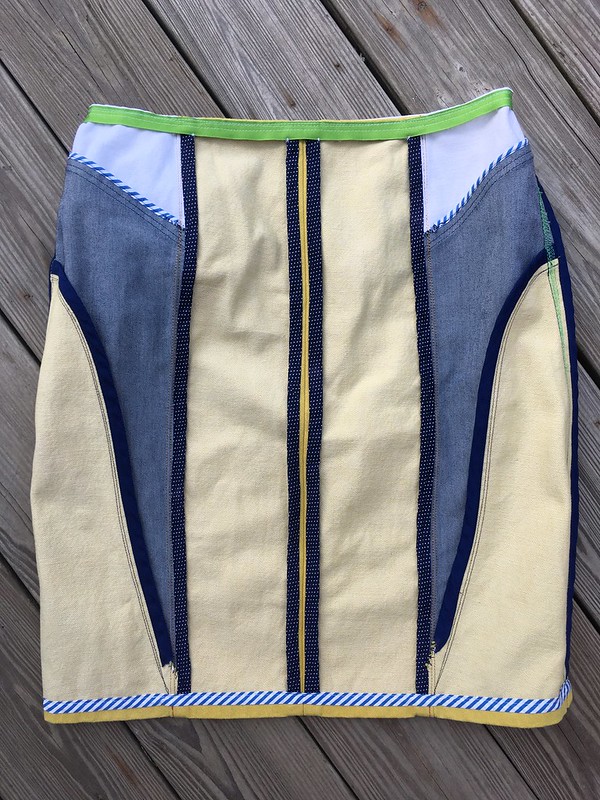
I’ve met some serious secret pajama goals with this pair of pants. In making these wide-legged, comfortable, sailor-inspired jeans, I’m revisiting a pattern I tried for the first time last summer: Simplicity 8391, view C.
Only this time I added seven inches to the length of the cropped pants in the pattern to make full-length pants/trousers, and I made them in denim because after several years of skinny jeans, I’m ready to let my legs out of prison, at least some of the time. Plus, these feel about as great as a nice pair of pajama pants.
I made these from a lighter midweight denim from Fabric Place Basement in Natick, MA. Fabric Place Basement is turning out to be a good source of denim for me. This denim was nicely drapey rather than stiff, perfect for wide leg pants.
I cut a 22. Really, I just altered the pattern I used this summer by adding length. My hem is 1.25 inches, but next time, I think I would make it an inch deeper, so I’d add one more inch to the length, allowing me 2.25 inches for my hem.
I changed the invisible zipper the pattern calls for to a lapped zipper with the help of Gertie’s New Book for Better Sewing by Gretchen Hirsch (the machine-sewn lapped zipper directions). I wanted to use a larger, more heavy duty jeans zipper.
That went pretty well, but I didn’t think about the best way to attach everything, so I sewed the zip to the pants and waistband, and then had some trouble figuring out how to secure the waistband facing without it interfering with the zipper. I got it in the end, but there’s probably a better way to do it. I also had some trouble closing the rest of the seam below the zip, so I used a combination of hand and machine sewing.
I covered the bottom edge of the waistband facing with a cute, striped vintage bias tape. I should have used double fold bias tape rather than single, or just done a Hong Kong seam finish rather than binding the edge, but I really wanted those stripes.
Normally, with jeans, I use a zigzag stitch to finish the seams, but now that I have a serger, I serged all my seam allowances, which looks a lot neater. I’m really happy with that.
I love the large pockets and the comfortable straight leg in this pattern. The denim I used also seems to have a good amount of mechanical stretch, which adds to the comfort, and the jeans zipper feels much more secure than the invisible zipper in my last pair.
I really love looser pants in the winter so I can fit a pair of long underwear underneath whenever necessary, but I think these will actually work year-round.
While I’m starting to think that, overall, I like a straight leg pant better than a wide leg style, as a straight leg is slightly narrower, this pattern is so cute and comfy that I would definitely make it again.
It’s also really nice to have more than one style of jean in your closet, you know? So, I’ll keep a pair or two of skinny jeans around while adding all the other fun cuts and styles I feel like making, too. 🙂
